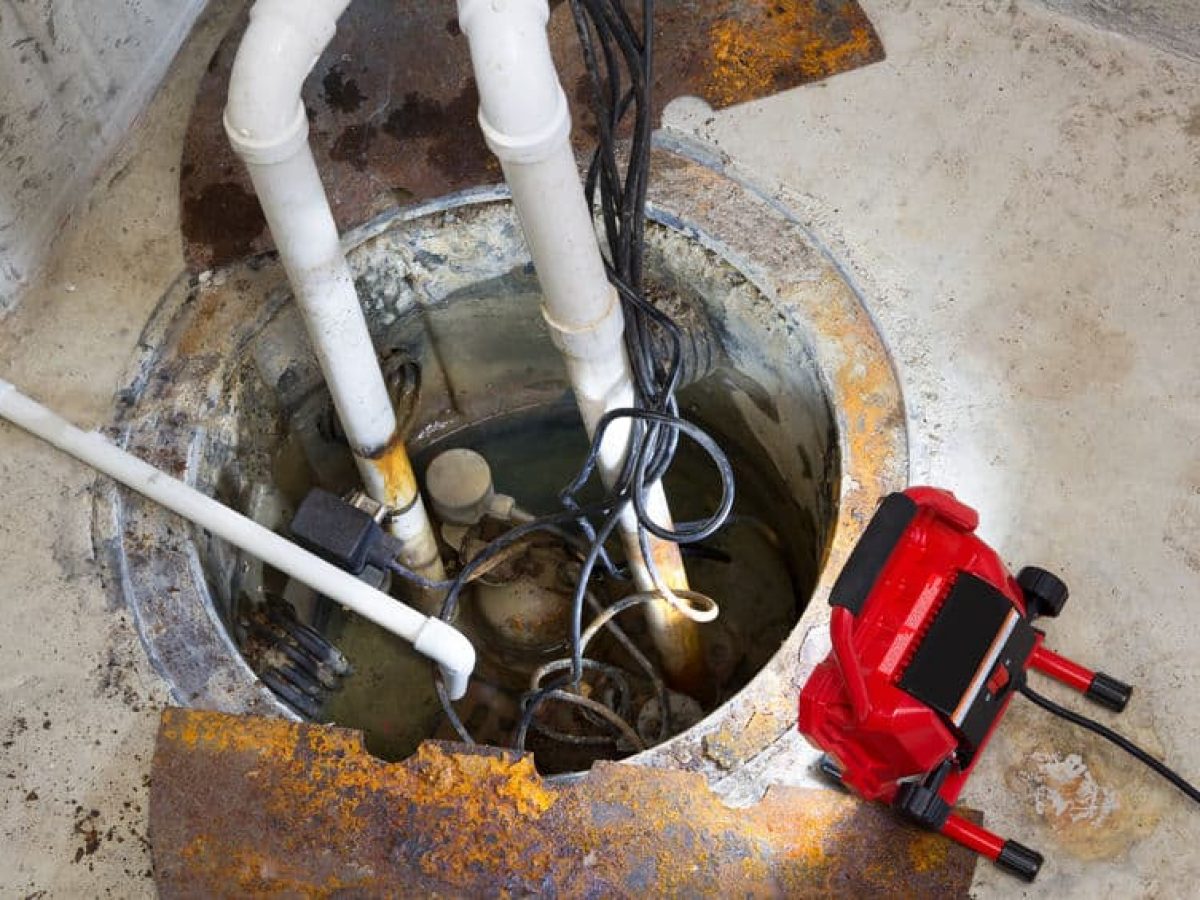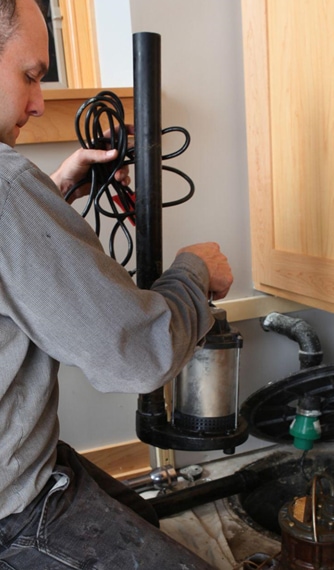Quick Steps to Taking Care of Your Sump Pump
Quick Steps to Taking Care of Your Sump Pump
Blog Article
Every person has their private idea in relation to Steps to Cleaning Your Sump Pump Properly.

Sump pumps are important elements in lots of homes, particularly in locations vulnerable to flooding or extreme moisture. They aid avoid water damage by effectively eliminating excess water from cellars or crawl spaces. Nevertheless, like any other appliance, sump pumps require regular upkeep to ensure they function effectively when required one of the most. Cleansing your sump pump is a vital part of its maintenance, and understanding just how to do it effectively can conserve you from pricey repair services and potential disasters.
Introduction
Maintaining a clean sump pump is important for its appropriate functioning and longevity. Neglecting this important task can cause blockages, malfunctions, and ultimately, water damages to your residential property. For that reason, learning just how to clean a sump pump is critical for home owners that count on these tools to keep their basements dry and safeguarded.
Signs of a Dirty Sump Pump
Knowing when your sump pump needs cleansing is essential for preventing possible breakdowns. Some usual signs that indicate an unclean sump pump include odd sounds throughout procedure, reduced water flow, and visible particles in the pit. If you see any one of these signs and symptoms, it's necessary to clean your sump pump immediately to avoid any more problems.
Preparing for Cleansing
Before you start cleaning your sump pump, it's important to take some safety precautions. Begin by shutting off the power to the pump to prevent any electrical mishaps. Furthermore, use ideal safety gear, such as gloves and goggles, to safeguard yourself from dirt, particles, and potential microorganisms.
Understanding the Sump Pump
Before diving into the cleaning process, it's important to have a basic understanding of exactly how a sump pump works. Typically installed in a pit or container below the basement flooring, a sump pump consists of a number of crucial elements, consisting of a pump, a float switch, and a discharge pipe. When water accumulates in the pit, the float button triggers the pump, which then pumps the water out with the discharge pipe, away from the building's structure.
Step-by-step Guide to Cleaning a Sump Pump
Shutting down the Power
Begin by detaching the power supply to the sump pump to avoid any type of crashes while cleaning.
Checking for Correct Performance
Before reinstalling the pump, carry out a fast test to guarantee that the float button triggers the pump properly. Pour some water into the sump pit and observe the pump's procedure. If everything is functioning appropriately, you can reassemble the pump and reconnect the power supply.
Removing Particles and Dirt
Use a bucket or a scoop to remove any kind of noticeable debris, dust, or sediment from the sump pit. Dispose of the debris effectively to stop it from blocking the pump or the discharge pipeline.
Cleansing the Pump and Drift Change
Once the pit is free from debris, meticulously eliminate the pump from the pit. Inspect the pump and the float button for any indicators of damages or wear. Utilize a soft brush or fabric to clean up the surface areas and remove any type of gathered gunk.
Purging the System
After cleansing the pump and float switch, purge the sump pit with tidy water to remove any kind of staying dust or debris. This will certainly aid guarantee that the pump runs efficiently and efficiently.
Maintenance Tips to Keep Your Sump Pump Clean
In addition to periodic cleaning, there are several upkeep suggestions you can follow to maintain your sump pump in ideal problem:
Conclusion
Cleansing your sump pump is a crucial element of its upkeep and ensures that it runs properly when you require it one of the most. By adhering to the steps laid out in this overview and including normal upkeep into your routine, you can prolong the life expectancy of your sump pump and secure your home from water damages.
6 STEPS ON HOW TO CLEAN A SUMP PUMP PROPERLY
UNDERSTANDING SUMP PUMPS
Your sump pump plays a crucial role in protecting your home by managing and removing excess water. It primarily functions as a “shield”, guarding your basement against the damaging effects of water accumulation. The pump is housed in a sump pit in the lowest part of your basement, and its job is to pump out any water that collects there.
During heavy rainfalls or when snow melts rapidly, water can infiltrate your basement, posing potential risks like flooding, structural damage, and harmful mold growth. Here, the sump pump springs into action, pumping out the intruding water and directing it away from your home.
SAFETY FIRST
Before cleaning, remember to prioritize safety. Disconnect the sump pump from the power source to prevent any accidental electric shocks. Also, wear sturdy gloves to protect your hands from any sharp or dirty components within the pump.
REMOVE THE SUMP PUMP
After ensuring your safety, the next step is to remove the sump pump from its pit. Doing this might require careful maneuvering as you don’t want to damage any pump components. Once removed, clean the sump pit to remove any accumulated debris or sludge.
INSPECT THE PUMP
Inspect the pump for any visible signs of wear or damage. Check the power cord, float switch, and impeller housing. If any components look worn out or damaged, consider replacing them to ensure optimal performance.
CLEAN THE PUMP
Thoroughly clean the pump with warm, soapy water. Make sure to rid it of any dirt, gravel, or other debris that might impede its performance. You can use a toothbrush to clean the small, hard-to-reach parts of the pump.
REINSTALL THE SUMP PUMP
Reinstall the pump into the sump pit Make sure it’s positioned correctly to remove the water effectively Once it’s back in place, reconnect it to the power source TEST THE PUMP
Finally, pour some water into the pit to ensure the pump works correctly. It should start automatically and begin pumping out the water; if it doesn’t, check the power source and the positioning of the pump.
Remember, while cleaning your sump pump is an essential part of home maintenance, hiring a professional plumber for a thorough inspection and cleaning at least once a year is also important. This will ensure that your pump is in optimal condition, ready to protect your home from potential water damage.
BEST PRACTICES FOR CLEANING SUMP PUMP DISCHARGE PIPES
Regular Inspection: Regularly inspect your discharge pipes, especially during heavy rainfall or snowmelt periods. Look for any signs of blockage or damage. Early detection of problems can prevent serious issues down the line. Periodic Cleaning: Over time, sediment and debris can accumulate in the discharge pipes, impeding the flow of water. Regular cleaning helps keep the pipes clear and functioning efficiently. You can use a high-pressure water jet to effectively clean the pipes. Insulation During Winter: In colder climates, discharge pipes can freeze, blocking the outflow of water. Protect your discharge pipes from freezing temperatures by insulating them with foam pipe insulation. This will ensure the sump pump can continue to discharge water even in freezing conditions. Proper Positioning: The discharge pipe should be positioned to direct water away from your home’s foundation. Improper positioning can lead to water seeping back into the basement. Ensure the pipe is long enough and angled correctly. Installation of a Check Valve: A check valve prevents water from flowing back into your sump pit after the pump has pushed it out. Installing a check valve helps maintain the efficiency of your sump pump and reduces the risk of flooding. Minimize Pipe Turns: Every curve or turn in the discharge pipe can decrease the efficiency of water flow. By minimizing turns and bends in your discharge pipe, you can increase the efficiency of your sump pump. https://www.fullspeedplumbing.com/how-to-clean-a-sump-pump-properly9999/

Hopefully you enjoyed reading our piece on Keep Your Sump Pump Clean, It'll Keep You Dry. Thank you so much for finding the time to read our short article. Do you know about somebody else who is curious about the topic? Why not share it. We appreciate your readership.
Explore Now Report this page